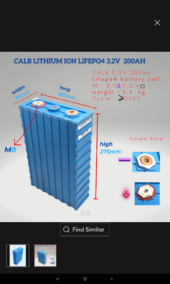It's not de-ionised water, might be good for temps but pretty sure if my bath isn't placed at least 12inches above ground level there will be sparks. I'll get the cooling from stainless coils dropped down if I decide to go ahead (more I look at battery prices, more likely I will).Might be even better !
What is the water temperature ?
It will always cool a bit at night, and evaporative cooling during the day should keep it well below peak mid day air temperatures.
Once monsoon stops water will quickly run out and temps will get to silly levels I think around 54°c/130°f is highest I've ever recorded here and that's always in shade.
I mentioned the whole thing to my sister in law and her husband yesterday and they just laughed but didn't seem to have any problems with me building it, I think they will be happy just getting a structure they can build from so the whole thing is becoming more and more likely.
I started pricing most of the materials up and how much my wife's credit card has climbed too so if I take care of it all in one fell swoop it's very likely I should start some time around Christmas.



![IMG_1910[1].JPG IMG_1910[1].JPG](https://diysolarforum.com/data/attachments/220/220984-e01a896c4ea819c9ba06bd3fa9336768.jpg)

